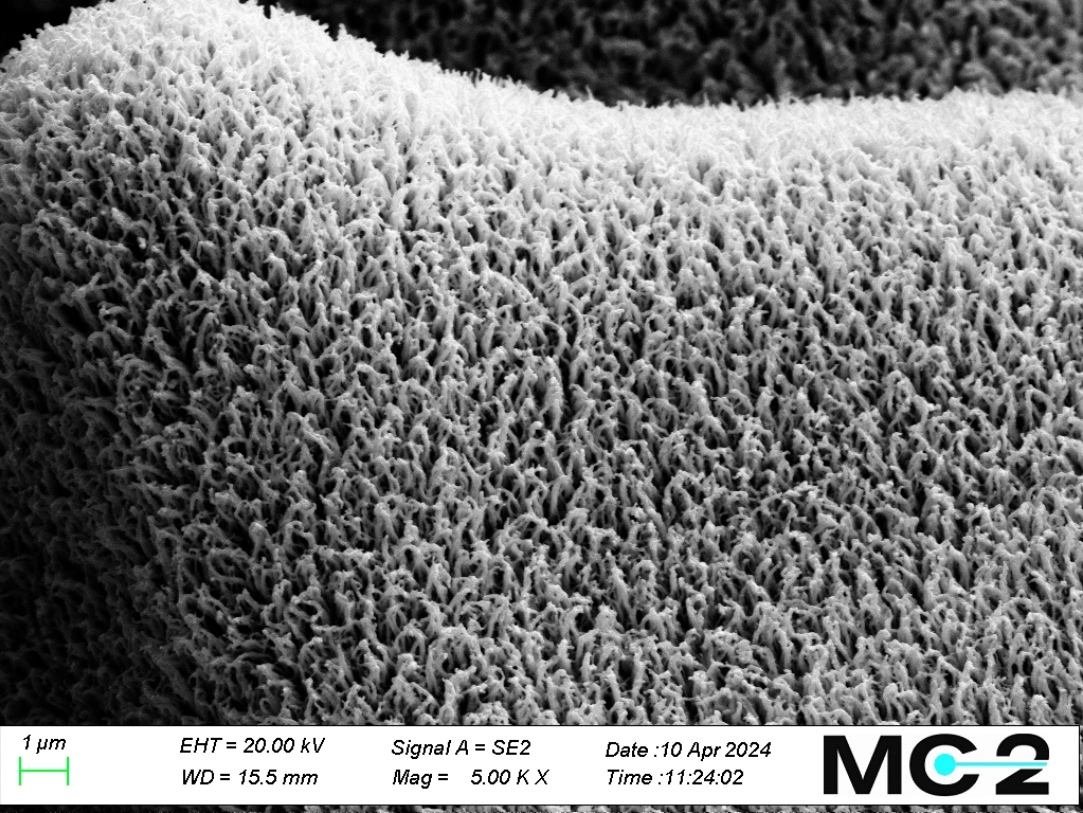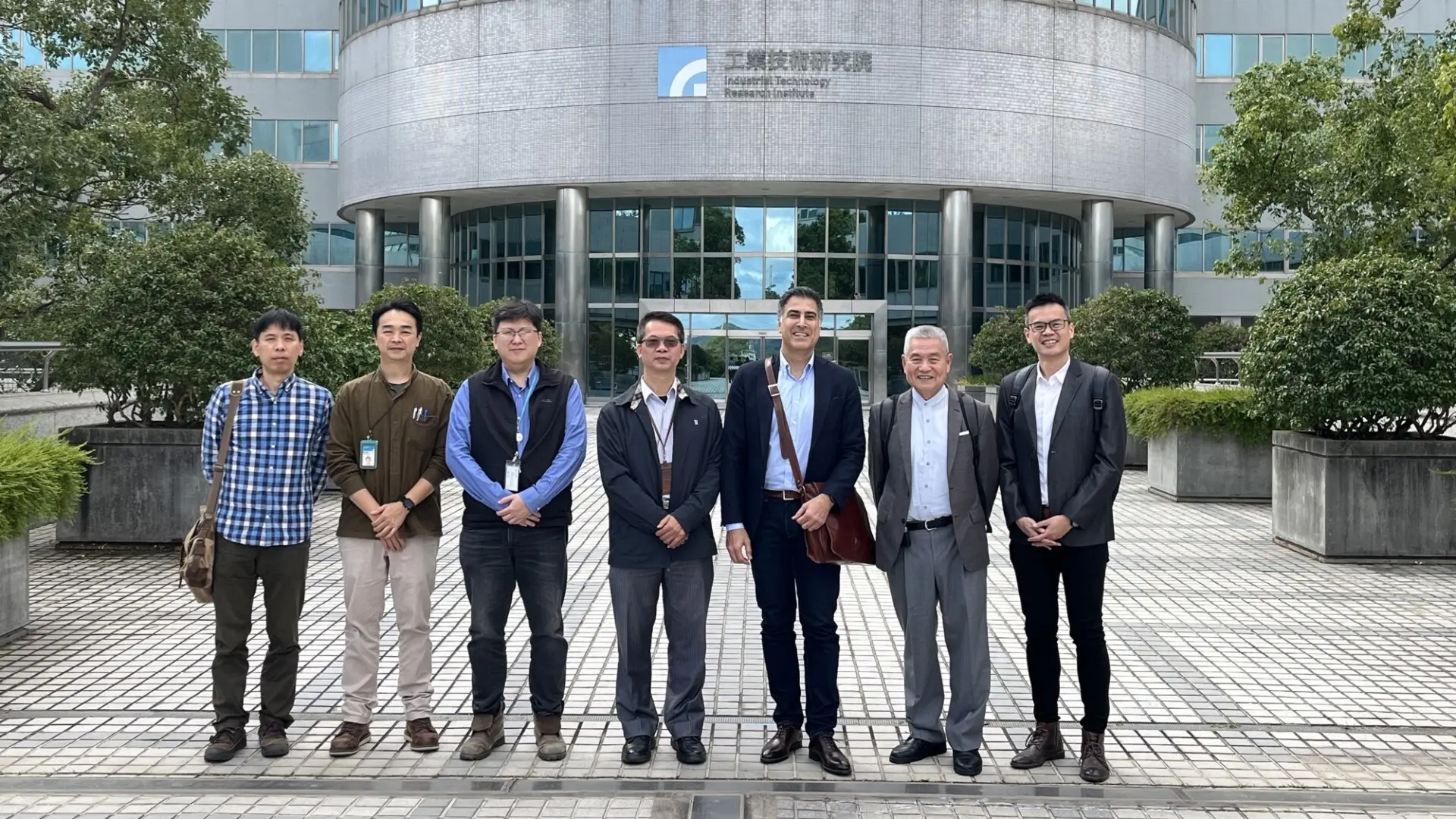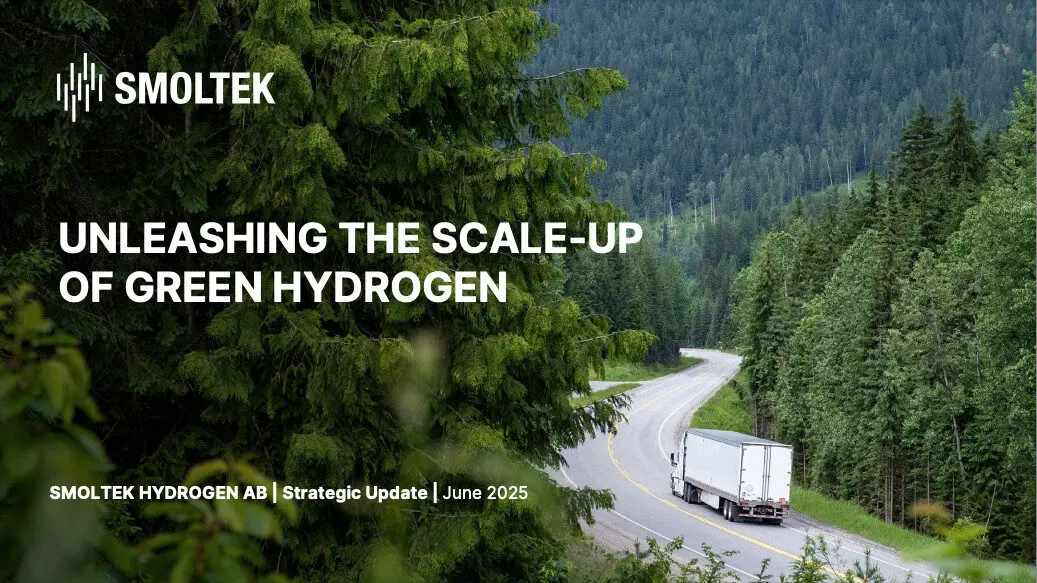Sign up for our newsletter!
Your data will be handled in compliance with our privacy policy.
Your data will be handled in compliance with our privacy policy.

Smoltek Hydrogen has produced hydrogen, for 1,000 hours with a catalyst load of only 0.2 milligrams of iridium/cm2, without any breakdown of the nanostructure in the cell having occurred.
Smoltek Hydrogen has completed a successful long-term test of our newly developed material for PEM electrolyzer cells. During 1000 hours of continuous operation, at 2 A/cm2, we have produced hydrogen with only 0.2 mg iridium/cm2 without any degradation of the nanostructure in the cell having occurred. The material, which consists of a corrosion-protected carbon nanostructure, forms one of the layers in an electrolyzer cell and the technology aims to significantly reduce the amount of iridium used as catalysts to produce hydrogen.
We have now proven that our technology with carbon nanofibers, coated with platinum, creates a stable structure in an anode electrode in a PEM electrolyzer. Our competitive analysis shows that we are the only one with a working solution for the anode side electrode, which is both durable and creates a large surface area for the iridium catalysts. This represents an important milestone for the company and for our dialogues with collaboration partners.
Ellinor Ehrnberg, President of Smoltek Hydrogen
Full-cell performance measurements show that we have performance comparable to conventional solutions, with only one-tenth as much iridium! During the first 10 hours of the test, the voltage rises from 2.1 to 2.5 volts, then increases only marginally. This is not abnormal for a process like this in a lab environment and it is something we will optimize in the next step in collaboration with customers, for example by using different types of iridium and perhaps also ruthenium.
Fabian Wenger, head of development at Smoltek Hydrogen
The thing that has been most questioned during the development of this technology is how we could create such a conformal layer of platinum that it can protect the carbon nanofibers against corrosion. Now, after 1,000 hours of continuous operation at 60°C, the fiber structure is intact and we proudly state that we have solved the most important question from both partners and competitors: how to create a stable nanostructure for an extremely thin iridium layer.
Ellinor Ehrnberg, President of Smoltek Hydrogen

Great progress in a short period of time
In a short time, Smoltek Hydrogen has made great progress towards significantly reducing the amount of iridium in the anode side electrode in electrolyzer cells by using nanofibers as the structure for the catalysis in the cell stack. In the spring of 2023, the company demonstrated that the newly developed material technology with corrosion-protected nanofibers could reduce the amount of iridium by 80 percent compared to a conventional material (0.5 mg iridium/cm2 compared to 2.5 mg iridium/cm2). This in an initial long-term test with an early prototype of the cell material.
“Through the establishment of our own development and test laboratory, H2LAB, including collaborations with world-leading researchers and partners, we have been able to accelerate R&D, which has increased the performance of our cell material for PEM electrolysers”, Ellinor Ehrnberg explains.
Smoltek Hydrogen aims to reduce the amount of iridium in the electrolyzer cell towards 0.1 mg/cm2. It is an ambition that aligns with the hydrogen industry’s goal to be able to scale up the production of electrolysers for large-scale production of fossil-free hydrogen. Iridium is a very expensive and critical precious metal with limited supply. Today it costs about SEK 1.7 million/kg and is forecast to cost about SEK 8 million/kg in 2030.
Your data will be handled in compliance with our privacy policy.
News

June 27, 2025
Smoltek Semi has cleared a significant milestone in the development of next-generation CNF-MIM capacitors. Samples from the latest prototype generation, fabricated with an advanced dielectric stack composed of zirconium oxide (ZrO₂) and aluminum oxide (Al₂O₃) have demonstrated exceptional stability under both temperature and voltage stress.
News

June 18, 2025
Smoltek Semi has initiated the signing of a technical service agreement with the Taiwanese Industrial Technology Research Institute (ITRI) that enables low-volume production of Smoltek's propriety CNF-MIM capacitors.
IR Blog Posts

June 16, 2025
Smoltek Semi joins an elite club of companies achieving 1 µF/mm² capacitance density, but stands alone in reaching this milestone with an ultra-thin profile. This breakthrough unlocks the under-chip real estate that represents the holy grail of capacitor placement in modern electronics.
News

June 12, 2025
Smoltek Hydrogen is developing Smoltek PTE – a proprietary porous transport electrode based on carbon nanostructures, which is intended to meet the requirements of next-generation PEM electrolyzers for the production of fossil-free hydrogen.
News

June 11, 2025
Smoltek Semi has successfully engineered an advanced dielectric stack that surpasses 1 microfarad per Square millimeter capacitance milestone.